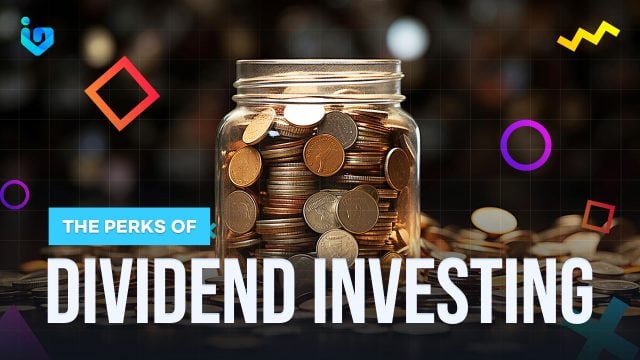Dividend investing is a strategy that involves buying stocks of companies that pay regular dividends to their shareholders. Dividends are payments that companies make from their profits to reward investors for owning their shares.
Dividend investing offers several benefits
- Steady income: Dividend stocks can provide a consistent source of income that can supplement your earnings or help you fund your retirement. Unlike interest payments from bonds or savings accounts, dividends are usually not fixed and can grow over time as the company increases its profitability and dividend payout. Dividend income can also help you cope with inflation, as dividends tend to rise faster than consumer prices.
- Capital appreciation: Dividend investing can also help you increase your wealth over time. As the company grows its business and expands its market share. During poor market conditions, these are also the companies most investors look to invest in. The reliability of dividends can help boost their stock price.
- Diversification: Dividend stocks can help you diversify your portfolio and reduce your risk. Dividend stocks can come from various sectors and industries, such as energy, consumer goods, healthcare, technology, and utilities. By investing in different dividend stocks, you can spread your exposure and hedge against market fluctuations. Dividend stocks can also perform well in different economic conditions, as some dividend stocks are more defensive and resilient, while others are more cyclical and growth-oriented.
How to Invest in Dividend Stocks
Investing in dividend stocks is a long-term strategy that requires patience and discipline. To invest in dividend stocks, you should follow these steps:
- Do your research: Before you buy any dividend stocks, you should do your homework and analyze the company’s financial performance, dividend history, and future prospects. You should look for companies that have a track record of stable and growing dividends, a strong competitive advantage, a healthy balance sheet, and a sustainable payout ratio. You should also compare the dividend yield, which is the annual dividend per share divided by the stock price, with the industry average and the market average, to see if the dividend is attractive and sustainable.
- Build a diversified portfolio: You should not put all your eggs in one basket and invest in only one or a few dividend stocks. You should diversify your portfolio by investing in different dividend stocks across various sectors and industries, as well as different market capitalizations and geographic regions. You should also balance your portfolio between high-yield and low-yield dividend stocks, as well as dividend growth and dividend value stocks, to optimize your returns and minimize your risk.
- Reinvest your dividends: One of the best ways to grow your dividend income and compound your returns is to reinvest your dividends. You can do this by using a dividend reinvestment plan (DRIP), which allows you to automatically buy more shares of the same company with your dividend payments, usually without paying any commissions or fees. By reinvesting your dividends, you can increase your share count, boost your dividend income, and benefit from the power of compounding over time.
- Hold for the long term: You should not invest in dividend stocks if you are looking for quick profits or short-term gains. Dividend investing is a long-term strategy that requires you to hold your stocks for years or even decades, to enjoy the full benefits of dividend income and capital appreciation. You should not be swayed by short-term market movements or emotions, and stick to your investment plan. You should only sell your dividend stocks if the company cuts or suspends its dividend, or if the company’s fundamentals deteriorate significantly.
Conclusion
Dividend investing is a rewarding and proven strategy that can help you achieve your financial goals and secure your financial future. By investing in dividend stocks, you can enjoy steady income, capital appreciation, tax advantages, and diversification. To invest in dividend stocks, you should do your research, build a diversified portfolio, reinvest your dividends, and hold for the long term.

